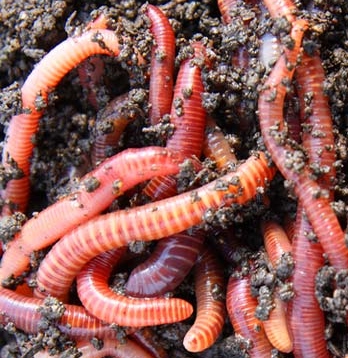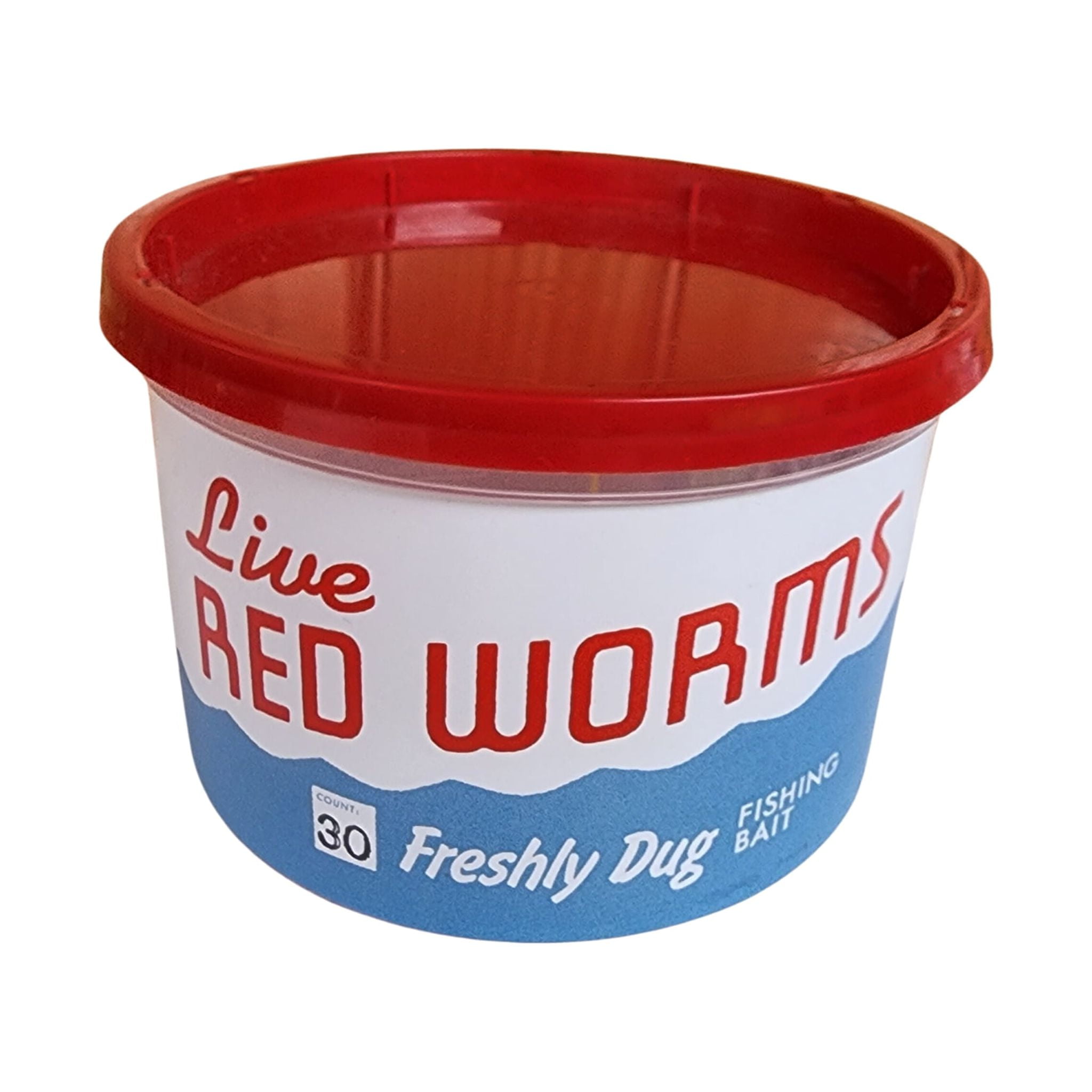The 6-Minute Rule for Where To Find Red Wigglers
The 6-Minute Rule for Where To Find Red Wigglers
Blog Article
Some Of Where To Find Red Wigglers
Table of Contents6 Easy Facts About Where To Find Red Wigglers DescribedThe smart Trick of Where To Find Red Wigglers That Nobody is DiscussingThe Best Strategy To Use For Where To Find Red WigglersSome Known Details About Where To Find Red Wigglers Getting My Where To Find Red Wigglers To WorkThe 3-Minute Rule for Where To Find Red Wigglers
For finest outcomes, you want to shoot for concerning 60-70% moisture degree. The most basic examination for this is to squeeze a handful as difficult as you can. At the ideal moisture levels which is simply under 70% that handful ought to barely produce one decrease of fluid. pH in a worm bin is pretty simple to preserve.
The Indian Blue is starved, yet also favors a warmer climate and it also exhibits a tendency to leave the bin. The red wiggler is a durable worm and isn't as particular about its environment. I such as to call it the Ford Taurus of vermicomposting worms; you will not boast to your hardcore composting buddies that you have them, however they will certainly serve you well.
Like any other bait, a worm's performance has involved depend on its presentation. H.G. "Tap" Tapply underscored this factor nearly a half century earlier in one of his Area & Stream columns. "A worm is such a shapeless animal," he wrote, "there does not appear to be extremely much an angler can do with it other than jab it on a hook and toss it into the water." As Tap showed, a fishermen can do an excellent deal to make a worm much more attractive.
Some Of Where To Find Red Wigglers
I think you will certainly too if you attempt them. The smaller sized the trout stream, the far better worms work is an axiom that hasn't altered in the 100-plus years considering that Perry composed his write-up. Fishermens of his period merely stuck their weak fly poles with alder tangles and dropped a weighted worm into a deep hole.
Morning is prime feeding time, and the weightless bait's slow-moving descent leaves 5 inches of squirming healthy protein completely sight for fairly a while. After you have actually made the cast, keep the bail open and put the rod in a forked stick. The line will diminish the pole in slow-moving loopholes as the worm works out, but much more usually than not the sluggish loopholes will certainly become a blur, and the morning will unexpectedly get instead fascinating.
I generally make use of a whole 'crawler, like marabou dressing, and go down the rod for two or 3 secs when I get a hit.
And distinguishing bottom from a bite can be hard. The trick is to reduce the pole back to the strike (possibly a foot) and feel for life at the end of the tightening up line. If it exists, established the hook with a move as opposed to a jerk. As soon as in a while you'll discover yourself hooked to those sluggish, passionate pulls, and feel the weight of a wonderful walleye.
Not known Facts About Where To Find Red Wigglers
When the hefty walleyes relocate on to the big-water shoals in visit this web-site the late summer season, try going after them with a bucktail jig and a 1-inch pinch of nightcrawler. The bait covers the hook point, disperses weeds, and offers a taste of prey. With absolutely nothing dangling or waving, it continues to be secure despite current, casts, or ambitious panfish.
Whether you're wading or angling from a watercraft, wandering worms is among the great browsing approaches for larger rivers. For trout, a spade-dug, 4-inch yard worm is the right size; for bass, walleyes, and steelhead, a nightcrawler may be a better selection. The trick is to drift the bait through feeding and holding locations since fish in present are not going to chase down the bait, as they could in still water.
Fish the shifts: mouths of tributaries, bank-side slicks, and the edges of big pools. His motto applies to any type of number of angling maneuvers, including the matter of adding a piece of worm to a wet fly.

The Ultimate Guide To Where To Find Red Wigglers
Include a few hundred worms and feed them two times a week. Keep the bedding wet yet not damp. On the food selection: lettuce, fruit and vegetable waste, and the periodic nongreasy leftover.
Similar to veggie scraps, you can take your utilized coffee grounds and include them to a worm box. Worms enjoy eating coffee premises. With the right problems and damp, healthy soil, worms can live in a container of dirt for around 3 weeks. Shop out of direct sunshine and maintain at a temperature level between 50 and 80 levels.
When the hefty walleyes go on to the big-water shoals in the late summertime, attempt going after them with a bucktail jig and a 1-inch pinch of nightcrawler. The bait covers the hook factor, disperses weeds, and offers a taste of target. With nothing dangling or flapping, it continues to be secure despite current, casts, or ambitious panfish.
Where To Find Red Wigglers for Dummies
Whether you're wading or angling from a boat, drifting worms is one of the fantastic searching approaches for bigger rivers. Where To Find Red Wigglers. For trout, a spade-dug, 4-inch garden worm is the right dimension; for bass, walleyes, and steelhead, a nightcrawler might be a much better choice. The trick is to wander the bait via feeding and holding locations because fish in current are not going to chase down the lure, as they might in still water
Strikes will come as a sharp yank as opposed to a pull or rap. Fish the transitions: mouths of tributaries, bank-side visit this site right here slicks, and the sides of big pools. As the late Ed Zern, Area & Stream's great satirist, useful reference when placed it: Fishermens are birthed honest yet they get over it. His adage uses to any number of angling maneuvers, consisting of the matter of adding an item of worm to a wet fly.
Raising your own lure implies you can slip out of the home and hit the pond prior to Mother comes homejust like in the old days. Below's just how to keep a worm box: Cut a sheet of CDX-grade plywood, which is made with waterproof glues, to your dimensions. Accomplish with each other and drill a loads 12-inch openings in the bottom for drainage.
Not known Details About Where To Find Red Wigglers
Include a couple of hundred worms and feed them 2 times a week. Keep the bed linens moist but not damp. On the menu: lettuce, fruit and veggie waste, and the occasional nongreasy leftover (Where To Find Red Wigglers).
Much like veggie scraps, you can take your made use of coffee premises and add them to a worm box. Worms enjoy eating coffee premises. With the right conditions and wet, healthy and balanced dirt, worms can reside in a bucket of dust for around three weeks. Store out of straight sunlight and keep at a temperature in between 50 and 80 levels.
Report this page